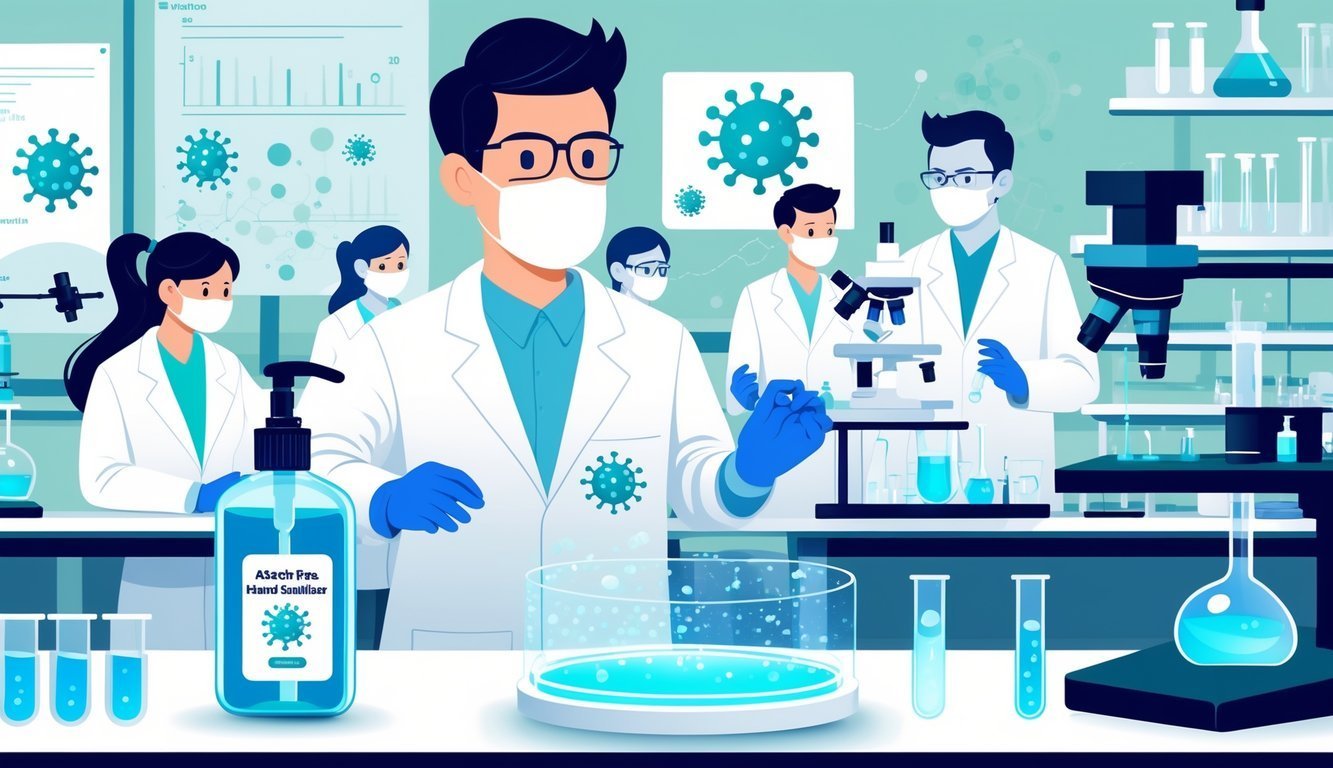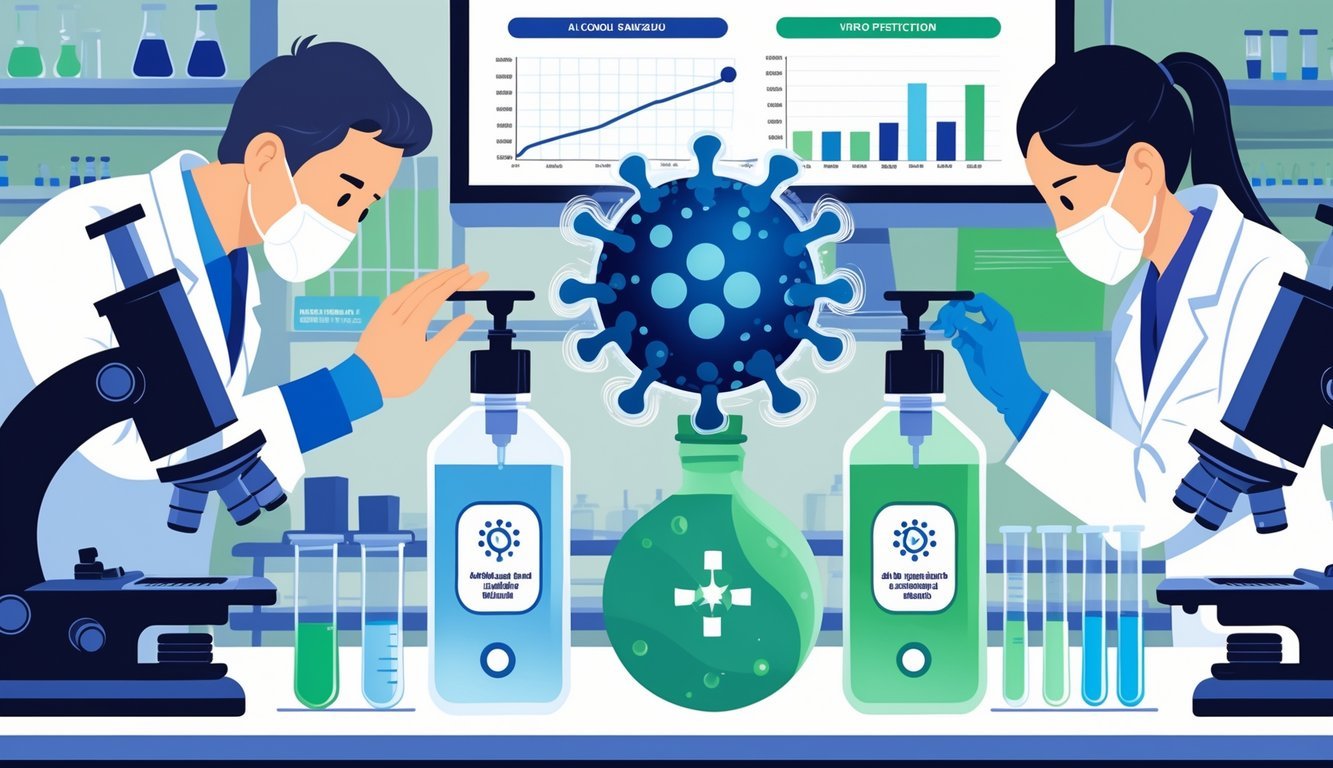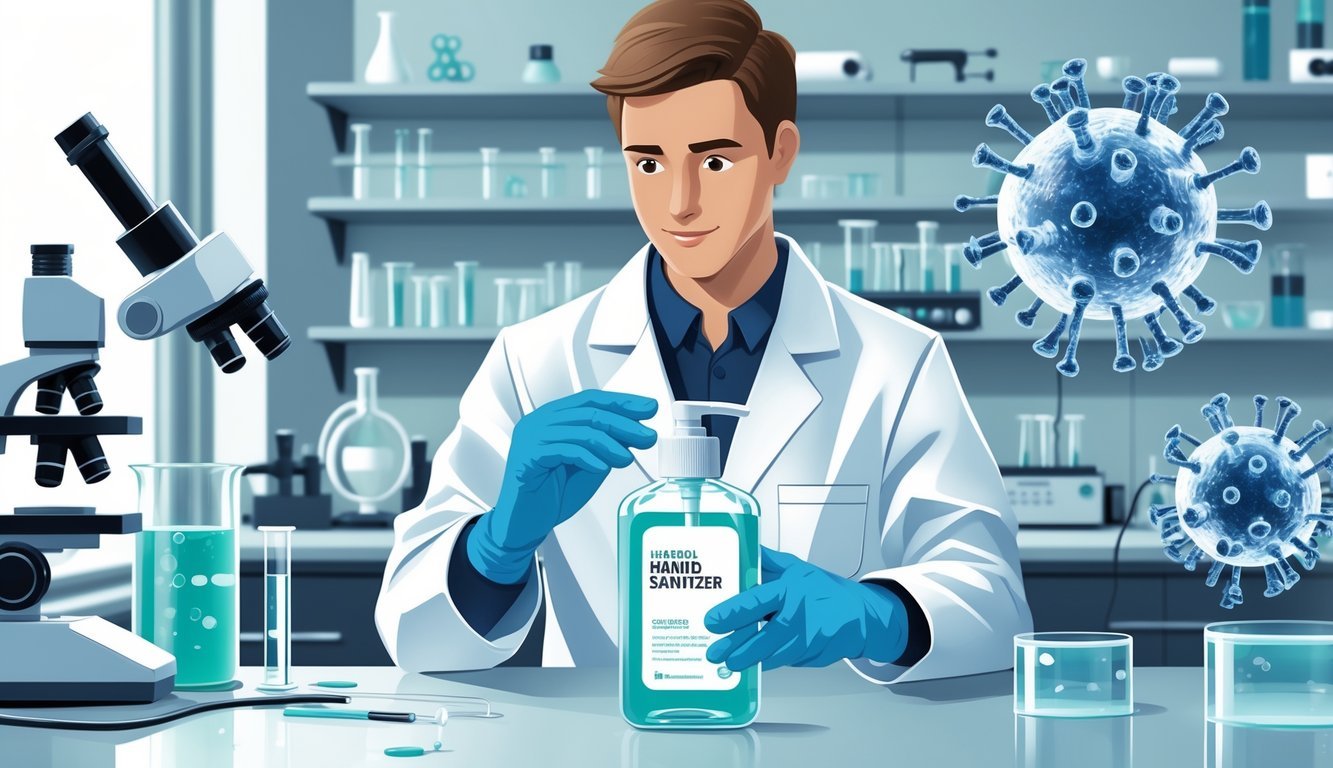PsychNewsDaily Publishers
100 Summit Drive
Burlington, MA, 01803
Telephone: (320) 349-2484
PsychNewsDaily Publishers
100 Summit Drive
Burlington, MA, 01803
Telephone: (320) 349-2484
Alcohol-free hand sanitizers effectively kill 99.9% of the COVID-19 virus within 15 seconds and are gentler on the skin compared to alcohol-based products.

A new study says alcohol-free hand sanitizers kill COVID-19 just as well as ones with alcohol. So, you’ve actually got safe options that might be gentler on your skin—and they still protect you from the virus.
Researchers found these alcohol-free sanitizers destroy most of the virus in just 15 seconds. If you want an alternative to the usual hand sanitizers, this could be a solid choice for your daily routine.
You don’t have to stick with alcohol-based products to keep your hands clean and lower your risk of COVID-19.

Maybe you thought only alcohol-based sanitizers worked against viruses like COVID-19. Turns out, alcohol-free options can be just as powerful.
Let’s break down what the new research uncovered, how both types compare, and how alcohol-free sanitizers actually fight off germs and viruses like SARS-CoV-2.
Brigham Young University ran tests with alcohol-free hand sanitizers on surfaces covered in the COVID-19 virus. The team saw several alcohol-free products kill 99.9% of the virus within 15 minutes.
They focused on how quickly and thoroughly these products disinfected surfaces, which really matters if you want to lower your risk of catching something. The findings suggest alcohol-free hand sanitizer is a good pick for protecting yourself from coronavirus and other germs.
Researchers compared popular alcohol-based sanitizers with alcohol-free ones. Both types wiped out nearly all the SARS-CoV-2 virus on surfaces in a short time.
| Feature | Alcohol-Based Sanitizer | Alcohol-Free Sanitizer |
|---|---|---|
| Virus kill rate (within 15 mins) | 99.9% | 99.9% |
| Skin feel after use | Can dry skin | Often gentler on skin |
| Duration of effect | Usually short | Some provide longer protection |
Alcohol-free sanitizers often use ingredients that stick around on your skin, giving a bit more lasting protection. When you pick a sanitizer, you might want to think about how it feels and how long it keeps working.
Alcohol-based sanitizers kill germs by breaking down their outer layer. Alcohol-free hand sanitizers use other methods.
Many of them use chemicals that mess with proteins inside viruses or stop them from infecting cells. These sanitizers can kill viruses like SARS-CoV-2 and a bunch of everyday bacteria.
They also help reduce the spread of disease by removing germs from your hands. Since they don’t dry out your skin as much, people often find alcohol-free sanitizers easier to use regularly.
That means you might not wash your hands as often but still keep them protected from coronavirus and other nasty bugs.

Hand hygiene is one of the best ways to stop COVID-19 from spreading. You can clean your hands with soap and water or with hand sanitizer.
Knowing when to use each and what to look for in products helps keep everyone safer.
Soap and water do a great job getting rid of germs and dirt. Wash your hands for at least 20 seconds, especially after the bathroom, before eating, and when your hands are dirty.
Hand sanitizers work well when you can’t get to a sink. Alcohol-based sanitizers are everywhere, but new research shows alcohol-free ones can also fight off COVID-19.
Pick a sanitizer with at least 60% alcohol or an approved alcohol-free product to make sure you’re killing germs.
Healthcare workers need quick, reliable ways to clean their hands and avoid spreading infections. But frequent handwashing can really dry out their skin.
Alcohol-free sanitizers help by being less harsh and making it easier for staff to stick to hygiene rules. Hospitals can support their teams by offering different types of sanitizers and skin care products to boost comfort and compliance.
Kids should always use hand sanitizer with an adult nearby. Some products have dangerous chemicals like methanol, which the FDA warns against.
Alcohol-free sanitizers tend to be gentler and less flammable, so they’re often safer for kids. Always read the label and pick products without harmful additives.
Teach children to use just a small amount and rub their hands until dry.
The CDC and FDA both give advice on hand hygiene. They say washing with soap and water is best for preventing illness.
If you can’t use soap, go for hand sanitizers with at least 60% alcohol. The FDA also approves certain alcohol-free sanitizers that meet their standards.
Follow local guidelines and choose trusted brands to make sure you’re staying safe.

Alcohol-free hand sanitizers can kill lots of viruses, including the one that causes COVID-19. They offer some different perks compared to alcohol-based products and work in a few ways, depending on the ingredients.
Yes, some alcohol-free hand sanitizers kill 99.9% of viruses, including COVID-19, in as little as 15 seconds to 15 minutes. The effectiveness really depends on the active ingredients and how much of them the product uses.
Alcohol-free sanitizers don’t dry out your skin as much. They might be safer for little kids and people with sensitive skin.
Plus, you don’t have to deal with that strong alcohol smell.
Soap and water physically remove dirt, oils, and germs. Some alcohol-free sanitizers kill viruses, but they might not clean as deeply as a good wash.
When you can, wash with soap and water.
Benzalkonium chloride is a common one. These chemicals disrupt viruses and kill germs without using alcohol.
Most side effects are pretty mild, like a little skin irritation or dryness for some people. Serious problems are rare.
Yeah, alcohol-free hand sanitizers tend to be easier on sensitive skin. If you notice irritation, you might want to switch brands or just stick with good old soap and water.